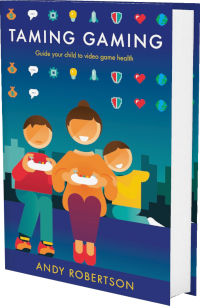 Android
Android iOS
iOS Mac
Mac Switch
Switch Wii
Wii Wii U
Wii U PC
PC PS4
PS4 PS5
PS5 Xbox One
Xbox One Xbox X|S
Xbox X|SWe've documented 26 accessibility features for Desta: The Memories Between, including Fully Voiced (Or No Speech), Large Subtitles, Large Text, Low Pressure and No Quick Reactions. Its accessibility is strongest in Getting Started and Reading but it also has features in Visual, Controls, Navigation and Audio to reduce unintended barriers.
This report is created with input from accessibility experts and the player community to help people find games that have the accessibility features they require. Once you have found potential games on the database, there are excellent specialist accessibility sites that offer in-depth reviews to guide your purchasing decisions.
External examiner, Megan Matthews, first checked Desta: The Memories Between accessibility 19 months ago. It was re-examined by Ben Kendall and updated 12 months ago.
 Accessibility Notes
Accessibility Notes
- Throwing: For the physics-based ball throwing, the player can choose between pull back controls (A swipe, hold, and release gesture) or buttons (A swipe, tap and confirm button gesture).
- Camera: The player can choose between swipe or tap controls for the rotating camera.
- Button Position: Can be adjusted to be positioned on the left or right hand side of the screen.
The speed at which in-game character quip speech-bubbles show is adjustable.
There are multiple presets for colour changing available which change the colours of the player and opposing team's overhead displays. These displays convey important information such as health points and action points.
 Game Details
Game Details
Release Date: 27/09/2022
Out Now: Android, PC, PS4, Switch, Xbox One and iOS
Players: 1
Genres: Brain Game, Narrative and Puzzle
Accessibility: 26 features
Components: 2D Overhead, Blocks and Grid
Developer: Us Two Games (@UsTwoGames)
Costs: Purchase cost
 Controls
Controls
We've documented 2 accessibility features for Controls in Desta: The Memories Between which deal with how you control the game, different options for alternative inputs and whether you can remap these settings to suit your needs.
Touchscreen
Can play with the following. Additional gestures may be required for games played with a screenreader like VoiceOver.
One Tap Targeted: Can play with touchscreen, tap in specific locations.
One Motion Targeted: Can play with touchscreen, tap and swipe or hold gesture.
Similar Games With More Accessibility Features for Controls
If you want to play Desta: The Memories Between, but it doesn't offer the Controls accessibility features you require, these similar games extend the Controls accessibility:
- No Longer Home (12 Controls Features)
- 39 Days to Mars (12 Controls Features)
- Unpacking (10 Controls Features)
- Hindsight (9 Controls Features)
 Difficulty
Difficulty
We haven’t documented any accessibility features for Difficulty in Desta: The Memories Between which deal with how you can adjust the challenge of play, and whether this is locked once chosen or can be adjusted as you play. The following games are similar to Desta: The Memories Between, and offer accessibility features for Difficulty:
- Please, Touch The Artwork (2 Difficulty Features)
- Unpacking (2 Difficulty Features)
- Neurodeck (1 Difficulty Feature)
- Dear Reader (1 Difficulty Feature)
 Getting Started
Getting Started
We've documented 9 accessibility features for Getting Started in Desta: The Memories Between which deal with what support is offered to get started with the game. This includes customising the experience when you first open the game via any onboarding processes it provides as well as tutorials and other assistance when you first start playing.
Assistance Getting Starting
These features aid your play of the game in terms of cognitive load on learning controls, dealing with pressure and coping with the environment and challenges.
Tutorials: There are helpful tutorials and instructions on how to play. Information is provided in a timely manner, with appropriate level of detail.
Practice Area: You can practice freely without opponents or time pressures. This can be a specific practice option, or the ability to play levels with the easiest opponents to improve understanding and skill.
Reaction-Time Not Critical: Individual game actions don’t need quick reactions, or there are settings to lower the requirement for quick reactions. This means you don't need to quickly press a button in response to an on-screen prompt, target a fast-moving target or skillfully complete a scenario against the clock.
Low Pressure: Game tasks aren't time-limited or there's a low-pressure mode. This avoids the pressure of being put on the clock for overarching missions, or failing tasks because you didn't reach a destination in time.
No Jump Scares: No sudden loud noises or popping-up scary visuals that unexpectedly appear without warning, or the option to disable them.
Assistance For Progressing
These features aid your progress through the game offering different ways of maintaining your progression.
Assisted Progress With Boosts: If you fail frequently the game automatically gets easier to ease the likelihood of failure. Or there’s an option to start this happening, like giving more health, lives or power each time you fail. Sometimes called Rubber Banding.
Assisted Progress With Hints: The game notices if you get stuck (or you can press a button) and provides information to help you progress. This can offer hints or tutorials popping up during play. This includes hints after you have died, where it can suggest strategies or difficulty settings to adjust or offer to skip past problematic levels.
Assisted Recall for Characters: The game provides reminders about character identity during play. This includes pop-up images and bios for character who is speaking.
Save Progress Anytime: The game automatically saves progress or you can save any time. This doesn’t mean you never lose progress, but it does mean you can stop whenever you want (without having to get to a save point) without losing progress.
 Reading
Reading
We've documented 7 accessibility features for Reading in Desta: The Memories Between which deal with how much reading or listening comprehension is required, how well the game provides visual and audible access to the text and whether subtitles and captions are a good fit for purpose.
Reading Level
How much reading is required to play the game's main path or story and how complex the language is. The presence of voiced characters doesn't reduce this requirement, as it's recorded as a separate datapoint.
Moderate Reading: Moderate reading required. The quantity and complexity of reading are at a level that a high school student (14-year-old) would appreciate.
Text Visibility
Large Clear Text: All essential text is large and clear or can be adjusted to be. The general text used throughout the game in menus, instructions and other key information (excluding subtitles that are assessed separately) is at least 1/20 (46 pixels on 1080 screen) the height on landscape screens and at least 1/40 height on portrait screens. We base this on the full line-height, including the space above and below the letters.
High Contrast Text: Text colour contrasts to the background or can be adjusted to be. The text in menus, instructions and other information is presented in high contrast with a solid background.
Subtitles
Large Clear Subtitles: Subtitles are large, clear and of good contrast. They are at least 1/20 (46 pixels on 1080 screen) the height of a landscape screen and at least 1/40 height on portrait screens, or can be adjusted to be. We base this on the full line-height, including the space above and below the letters. Considered separately from the general text of the game, the subtitles are large, clear and of good contrast.
Some Speech Subtitled: Some spoken content has subtitles. This reduces the pressure on interpreting all the spoken content, although not everything is captured textually.
Captions
Speaker Indicator and their Tone: Textual captions indicate who is speaking and their tone (or there is only ever one person speaking). This can also be indicated visually in the game with character icons or character expressions with text in speech bubbles next to the person speaking.
Voice Acted
All Dialogue is Voice Acted (Or No Speech In Game): All of the game dialogue and narrative can be voiced, or there is no speech in the game. This means there is no requirement to read the dialogue and narrative text to play the game.
 Navigation
Navigation
We've documented 2 accessibility features for Navigation in Desta: The Memories Between which deal with how the game provides guidance and assistance to navigate its worlds. These are only for games that have traversal and exploration in 2D and 3D spaces.
Menu Navigation
Menu Audio Cues: Navigating menus provide an audio cue for each selection.
Menus Don't Wrap: Menus don't wrap and stop the cursor at the bottom of the list if you press down. Or menus do wrap but make it clear that you are back at the top of the list with sound or narration.
Similar Games With More Accessibility Features for Navigation
If you want to play Desta: The Memories Between, but it doesn't offer the Navigation accessibility features you require, these similar games extend the Navigation accessibility:
- Unpacking (5 Navigation Features)
- Lake (5 Navigation Features)
- Venba (4 Navigation Features)
- Alba: A Wildlife Adventure (4 Navigation Features)
 Visual
Visual
We've documented 5 accessibility features for Visual in Desta: The Memories Between which deal with how you can adjust the visuals to suit your needs, and offer additional information if you can't hear the game.
Interactive Elements
Large Game Elements: Game characters and other elements are large and distinguishable. Enemies and player characters are at least 1/6 of the height of the screen. Or there is a zoom feature to make them larger.
Visual Distractions
No Screen Shake: No screen shake effect or it is included but it can be disabled. This includes the absence of screen shake for dramatic effect as well as to indicate hits on a target.
Audio Cues for Visual Events
Menu Audio Cues: Navigating menus provide an audio cue for each selection.
Motion Sickness Friendly
Motion Sickness Friendly: Doesn't have 3D movement elements that may trigger motion sickness, like motion blur, depth of field and field-of-vision. Or includes the ability to disable motion blur, depth of field and field-of-vision effects.
Colour Options
Colour Adjustments: Adjust colours of characters or game elements for greater visibility. Includes the ability to select which type of colour blind mode you require.
Similar Games With More Accessibility Features for Visual
If you want to play Desta: The Memories Between, but it doesn't offer the Visual accessibility features you require, these similar games extend the Visual accessibility:
- Neurodeck (9 Visual Features)
- Before Your Eyes (8 Visual Features)
- Venba (7 Visual Features)
- Rivals (7 Visual Features)
 Audio
Audio
We've documented 2 accessibility features for Audio in Desta: The Memories Between which deal with how you can adjust the audio of the game and whether audio cues compensate for aspects of the game that are hard to see.
Adjustable Audio
Balance Audio Levels: Set music and game sound effects separately. This enables you to select your preference as well as ensure critical game sounds aren't obscured by other audio.
Play Without Hearing
Play Without Hearing: No audio cues are necessary to play the game well.
Similar Games With More Accessibility Features for Audio
If you want to play Desta: The Memories Between, but it doesn't offer the Audio accessibility features you require, these similar games extend the Audio accessibility:
- No Longer Home (3 Audio Features)
- Alba: A Wildlife Adventure (3 Audio Features)
System Accessibility Settings
In addition to the accessibility features provided in the game, you can also use system-wide accessibility settings:
Android
Android has accessibility settings including ways to navigate and interact, although not all games support this.
Nintendo Switch
Nintendo Switch has some built-in features, including a lockable zoom, that can be used on all games.
PC
Windows has extensive accessibility features. Some, like colour correction, work with games. Lots of accessibility software can be used with PC games, from voice recognition to input device emulators.
PlayStation 4
PlayStation 4 has a range of accessibility settings. Some are system only, some work in games (invert colours and button mapping).
Xbox One
Xbox One has a system features, the excellent co-pilot share controls mode and adaptive controller support for all games.
iOS
iOS has a very extensive suite of accessibility settings including ways to navigate with voice and comprehensive screen reading, though most of the features don't work with games.
Read more about system accessibility settings.
Accessibility Report supported by VSC Rating Board, PlayabilityInitiative and accessibility contributors Andy Robertson and Ben Kendall












